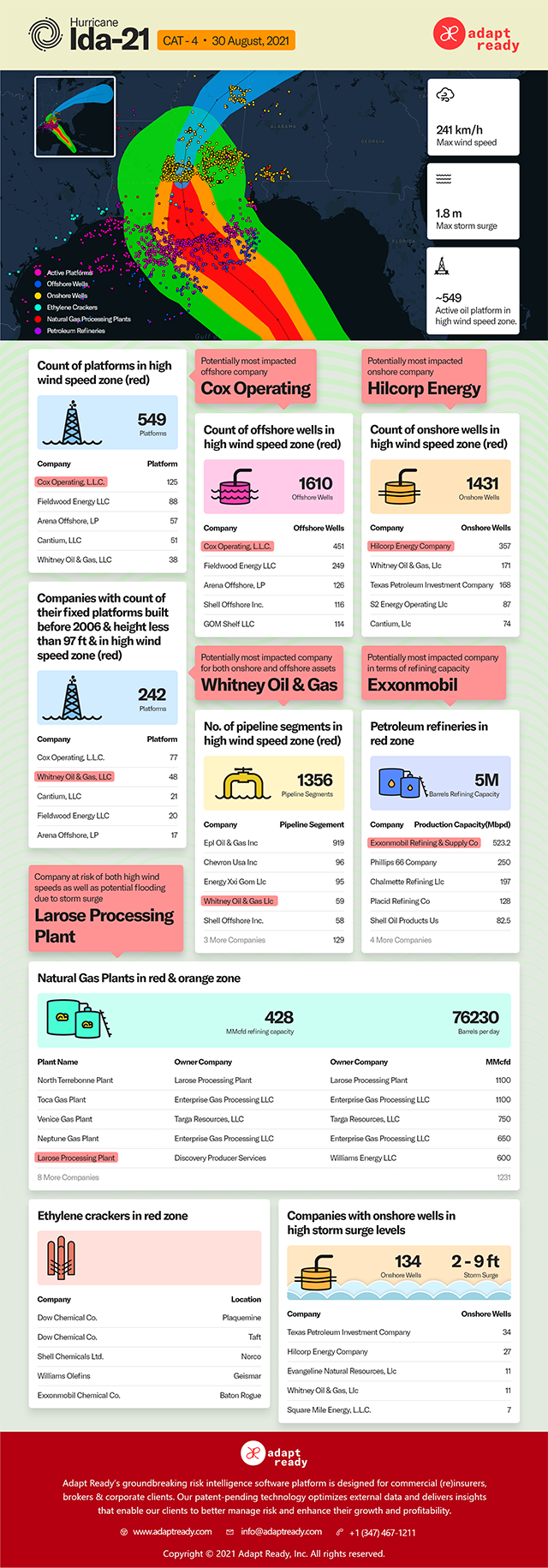When Hurricane Ida became the fifth strongest hurricane ever to hit mainland US on the 16th anniversary of Hurricane Katrina (with windspeeds reaching 150mph), it struck the energy sector first as always.
The effects were initially obvious with power outages across the entire city of New Orleans as the city’s power supplier, Entergy reported a city-wide loss of power to over 1 million people.
The potential issues only begin at the initial damage caused by the storm to the sector. Business Interruption is already becoming a factor and then the supply chain impacts will be felt as the storm subsides.

You can see from the infographic showing the impact of the storm as of today that 1,610 active offshore oil & gas wells were in the direct path and 549 offshore platforms, with Cox Operating LLC owning/operating 23% of these platforms and 28% of the wells!
Most affected companies:
- Offshore Assets:
- Cox Operating LLC: 125 active platforms and 451 active wells exposed to heavy winds
- Onshore Assets:
- Hilcorp Energy Company operating a quarter of all onshore wells that are in high-impact zone
- Offshore & Onshore Assets Combination:
- Whitney Oil & Gas LLC
As always, the age of the facilities is incredibly important because it was Hurricane Katrina itself in 2005 which altered the design of platforms — requiring increased height to protect them from major storm swells.
In this regard too, Cox Operating LLC leads the pack with 77 of its active platforms that were of fixed type, having been built before 2006 (pre-Katrina) and thus stand lower than the required height of 97 ft, in the path of peak wind speed.
In terms of refineries, we anticipate significant reduction in production capacities, both due to damages/electricity outages and the preemptive closures:
- ~428 MMcfd natural gas refining capacity potentially at risk
- 5M barrels petroleum refining capacity at risk
- Dow Chemicals, Shell Chemicals, ExxonMobil are some of the well-known companies that will have significant reductions in their daily production capacities
The impact to these facilities is going to be felt long into the year, specifically by the immediate consuming industries such as chemical, plastics & rubber. More on this is available in our BI/CBI impacts infographic.


